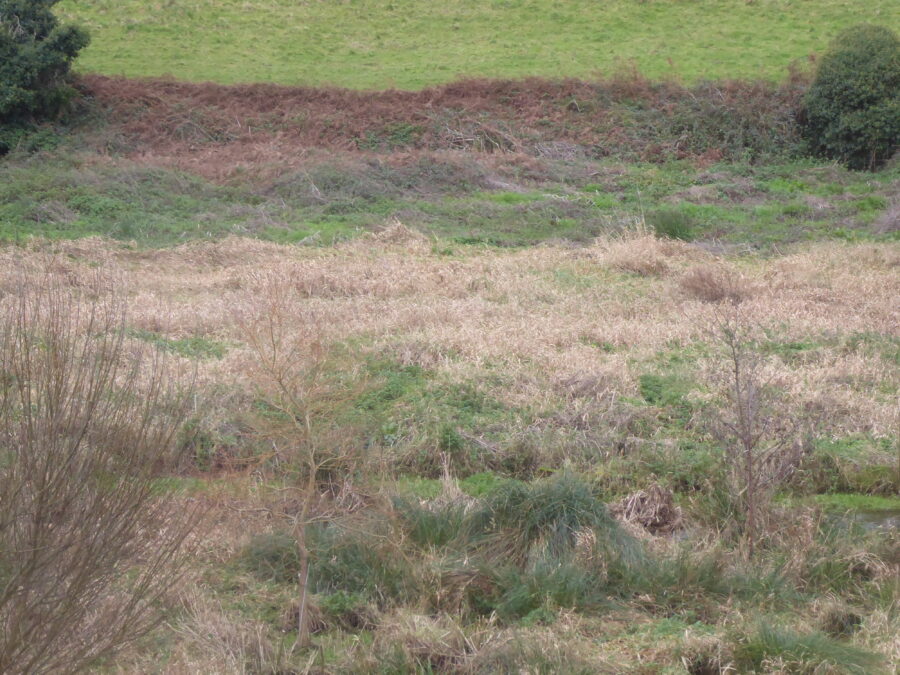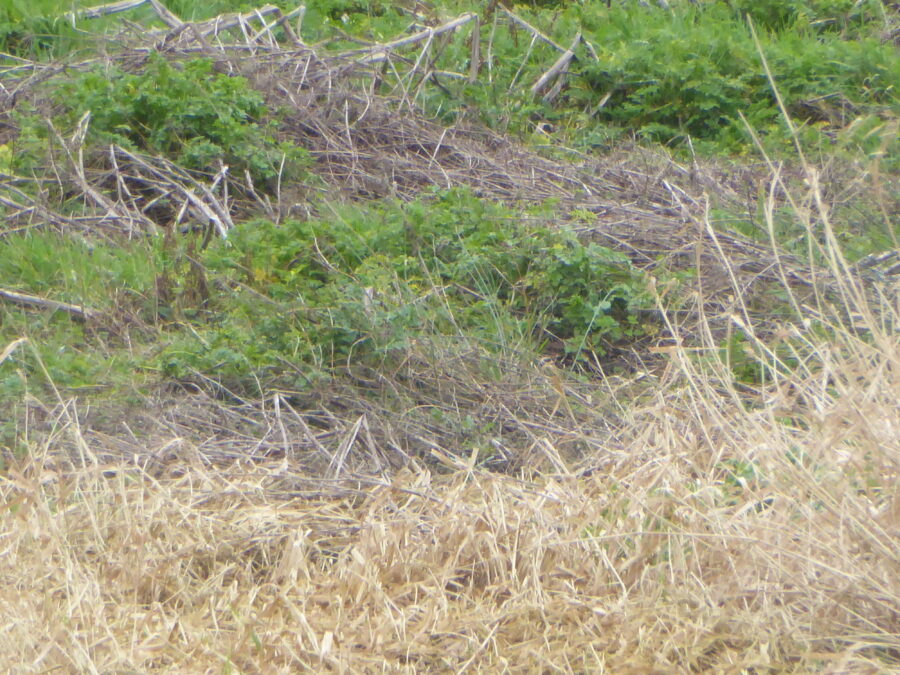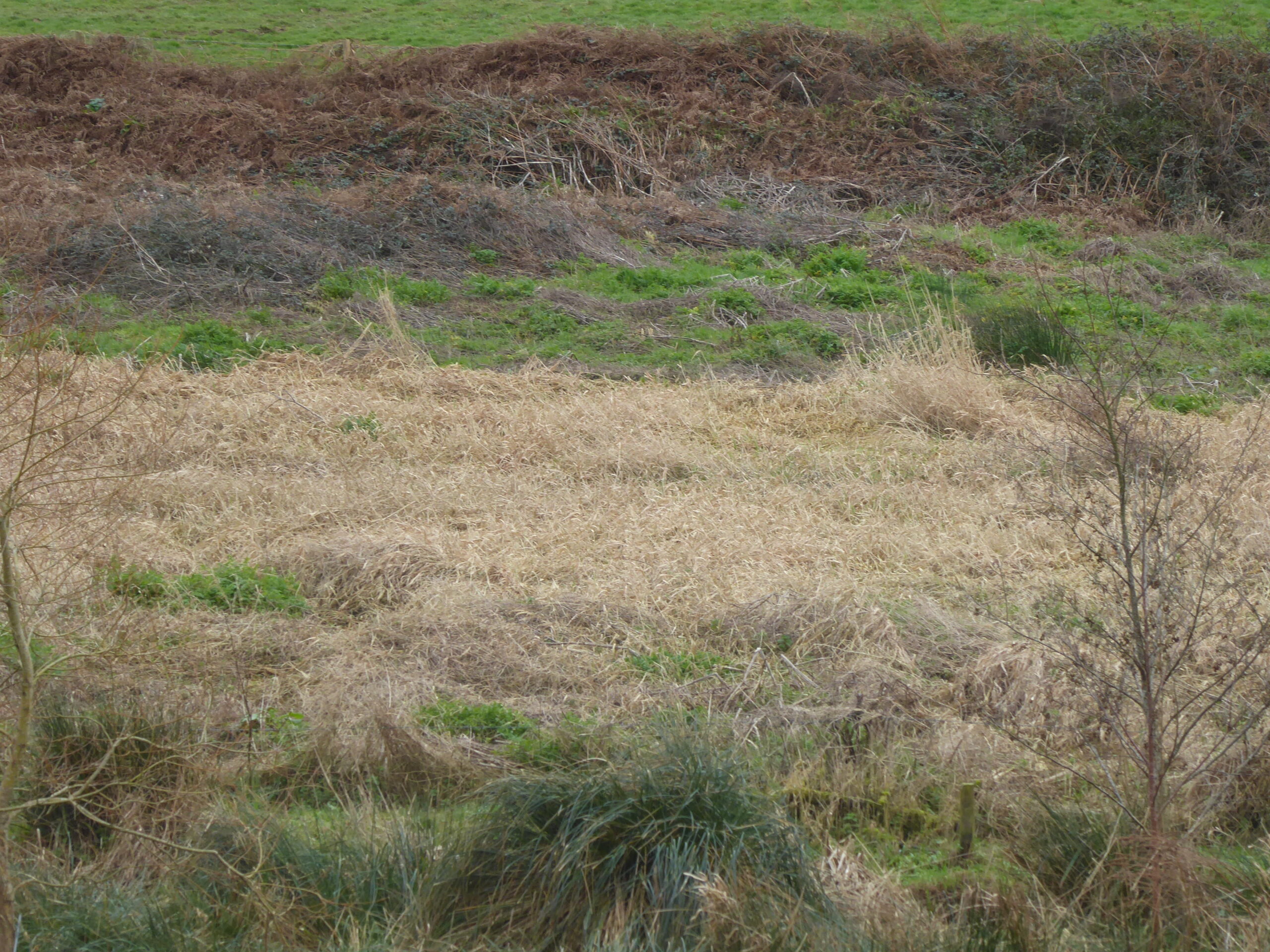It’s very interesting comparing today’s picture with December’s. On the face of it not much different. However, the green splashes are more vibrant and luxuriant. And the reason is, I think, because they are different plants.


In December the nettles, a duller green, were still holding out over the other side of the valley. They have died back over the winter and are much greyer in colour where they are visible. You will notice the bright green patches are also lusher in texture and that’s because it’s the return of the arch-villain Hemlock Water Dropwort. HWD has an early start and early demise, sinking fast after its deceptively pretty lacey flowers have finished, and then being swamped by the beanstalk-high Reed Canary Grass.
In the picture below you can see in the top right especially, the fronds of HWD. In the centre of the picture are some remaining nettles – you can see their individual leaves of a duller green. Also, note the dead grass, looking very hay-like.


